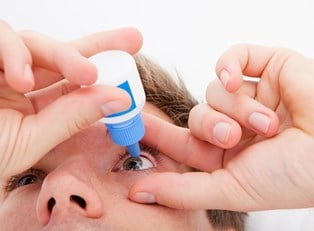A cataract is a clouding of the eye's interior lens that occurs as the human body ages. A cataract can lead to loss of vision, and it can't be remedied through contact lenses, eyeglasses or LASIK surgery. While it sounds like a serious malady, cataract surgery can do more than merely restore vision. It can even decrease an individual's dependency on glasses.
Relevant Statistics
More than 2 million people in the United States have cataracts surgery every year. Approximately 90% of the operations are successful in restoring meaningful vision. Complications do occur but at an incredibly low rate. People over the age of 50 constitute the demographic that is most likely to suffer from cataracts.
Studies have shown that more than 20 million Americans over the age of 40 have at least one cataract. More than 6 million people in this group have already had cataract surgery. Contemporary cataract surgery is incredibly safe and effective. Only those with pre-existing eye conditions like macular degeneration or diabetic retinopathy should have concerns about the surgery.
Cataract Surgery
Cataract surgeries are typically performed by ophthalmologists, also commonly referred to as eye surgeons. The surgery takes place in an ambulatory environment, typically in a hospital or surgical center. The ophthalmologist almost always applies a local anesthesia in either a topical, retrobulbar, or peribulbar form.
During the cataract surgery, the lens inside of the eye that has become cloudy due to a cataract is removed and an artificial lens is substituted in its place. These are typically referred to as intraocular lenses. When the lens is implemented, vision is restored.
To eliminate the cloudy lens, ophthalmologists usually rely on a high frequency ultrasound probe to dismantle it into pieces that are then suctioned out of the eye. Patients can choose from a variety of replacement lens options. The lenses that are traditionally used are called monofocal intraocular lenses. These offer vision at one of three distances: near, intermediate, or far.
The newer lenses are called multi-focal intraocular lenses. These are considered to be premium level lenses because they enable a person to see at multiple distances. Those who choose this lens won't have to wear glasses or contact lenses to see at all distances. Premium lenses are always applied when astigmatism or presbyopia exists.
Costs And Health Coverage
Cataracts are incredibly common and have the potential to cause significant losses in vision. Therefore, the majority of health insurers cover the surgery cost to remove them and implement a new monofocal lens. The cost of the surgery per eye usually ranges from $500 to $600. The vast majority of insurance companies will pay for conventional intraocular lenses, yet patients will oftentimes have to pay the difference in price when they choose premium lenses.
Cataract surgery is one of the more common operations that is covered through Medicare's part B. It is worth noting that patients who opt for the multifocal and astigmatism-correcting lens may not be fully covered under their insurance plan. Patients who have a flexible spending account through their employer can utilize those funds for the more costly lens.



